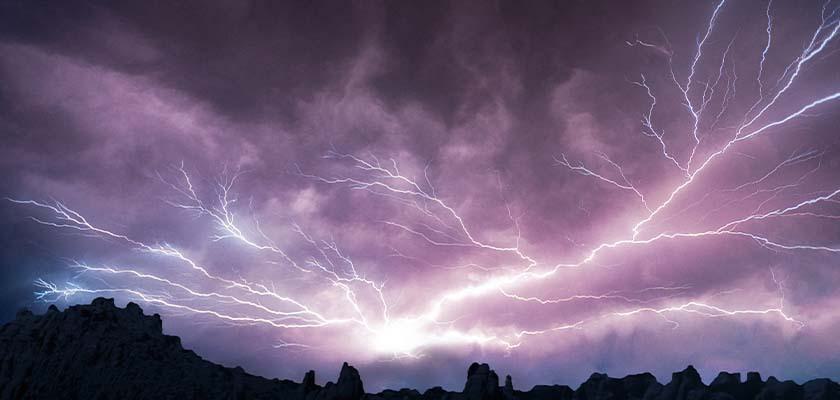With the warmer weather comes thunderstorms, and thunderstorms come with lightning.
Along with brutal heat and humidity, Alabama can play host to dozens of severe thunderstorms throughout the summer months.
According to the National Weather Service, over the most recent 30-year reporting period (1989-2018), the U.S. has averaged 43 reported lightning fatalities per year. Only about 10% of people who are struck by lightning are killed, leaving 90% with various degrees of disability. More recently, in the last 10-year (2009-2018) reporting period, the U.S. has averaged 27 lightning fatalities.
An Alabama man was killed after being struck by lightning on Tuesday, the sixth lightning fatality this year.
According to the National Lightning Safety Council, all six lightning deaths in the U.S this year occurred after June 22.
What is lightning?
According to the National Severe Storm Laboratory, lightning is a giant spark of electricity in the atmosphere between clouds, the air or the ground. In the early stages of development, air acts as an insulator between the positive and negative charges in the cloud and between the cloud and the ground. When the opposite charges build up enough, this insulating capacity of the air breaks down, and there is a rapid discharge of electricity that we know as lightning. The flash of lightning temporarily equalizes the charged regions in the atmosphere until the opposite charges build up again.
Thunder is the noise produced after energy from a lightning channel heats the air briefly to around 50,000 degrees Fahrenheit, much hotter than the surface of the sun. This causes the air to explode outward. The explosion creates an audible crack that can be heard for miles.
Lightning Safety.
According to the Centers for Disease Control and Prevention (CDC), there is no real safe place while outdoors during a thunderstorm, but there are steps anyone can take.
It is always best to avoid being caught outside during a storm. However, finding shelter and staying low become a priority if caught out in the open.
If no structures are available, the best option is to get as low as possible, find low trees in groups, and crouch down. The CDC recommends never using rocky overhang or rocky terrain as protection, and they suggest you avoid bodies of water and conductive material, such as barbed wire fences, power lines or windmills.
Even though your home is a safe shelter during a lightning storm, you might still be at risk. About one-third of lightning-strike injuries occur indoors, according to the CDC.
The CDC recommends that you not bathe, shower, wash dishes or have any other contact with water during a thunderstorm because lightning can travel through a building’s plumbing. The risk of lightning traveling through plumbing might be less with plastic pipes than with metal ones. However, avoiding any contact with plumbing and running water during a lightning storm is the best way to reduce your risk of being struck.
To connect with the author of this story, or to comment, email craig.monger@1819news.com.
Don’t miss out! Subscribe to our newsletter and get our top stories every weekday morning










